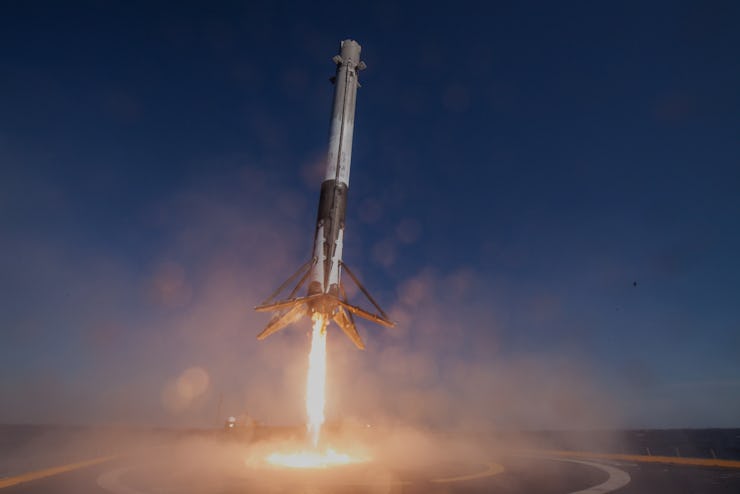SpaceX has made a really big deal out of landing reusable rockets after launching things into space, but the company won’t even try on its next launch.
This upcoming mission is a big one — the company will try to hurl a 12,000 pound EchoStar communications satellite into a geostationary transfer orbit, a task that takes an enormous amount of kinetic energy. While the Falcon 9 is a massive, powerful rocket, it won’t be able to get the heavy EchoStar satellite 22,000 miles into space with enough fuel left for the descent burn and landing.
Fortunately, the late January launch (which should happen before the 30th) will be one of SpaceX’s last missions with the current Falcon 9. Musk said on Twitter Sunday night that future missions will switch to the even bigger Falcon Heavy, which is basically a behemoth with three Falcon 9 engines, or an upgraded version of the Falcon 9. The upgraded Falcon 9, known as the Block 5, “significantly improves performance & ease of reusability,” Musk said, and should be in the air by the end of 2017.
Musk might also be making sure that he doesn’t start the new year off with a bang, or a rapid unscheduled disassembly as he prefers to call exploding rockets. A “low-margin droneship landing” as George put it, probably wouldn’t be the best way to start off the new year, especially after 2016’s massive fireworks display which permanently stalled the company’s launch plans for over four months.
